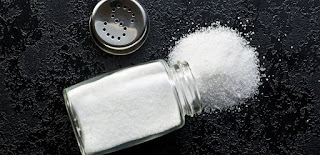Microplastics, plastic particles less than five millimeters in length (or about the size of a sesame seed), were found in sea salt several years ago. But how extensively plastic bits are spread throughout the supply of the world's most commonly used seasoning remained unclear. Now, new research shows microplastics in 90 percent of the table salt brands sampled worldwide.
Of 39 brands sampled, 36 contained detectable levels of microplastic particles. The recently released study, co-designed by Professor Seung-Kyu Kim at Incheon National University in South Korea and Greenpeace East Asia and published in Environmental Science & Technology, analyzed salt samples from 21 countries throughout Africa, Asia, Europe, North America, and South America. The three brands that did not contain were from Taiwan, which uses refined sea salt; China, which uses refined rock salt; and France, which uses unrefined sea salt produced by solar evaporation. The report noted that the highest concentration of microplastics were found in commercial salt sold in Indonesia. The study also indicated that concentrations of microplastics were highest in sea salt, followed by lake salt, and then rock salt.
Estimating that an average adult consumes 10 grams of salt per day (The average American consumes 3 to 4 grams daily), the report concluded that people could be ingesting approximately 2,000 microplastics each year through commercial salt alone without knowing how harmful the effects could be. “The findings suggest that human ingestion of microplastics via marine products is strongly related to plastic emissions in a given region,” said Professor Kim. “In order to limit our exposure to microplastics, preventative measures are required, such as controlling the environmental discharge of mismanaged plastics and more importantly, reducing plastic waste.”
"I want to say one word to you. Just one word. Plastics." - Walter Brooke to Dustin Hoffman in The Graduate




No comments:
Post a Comment